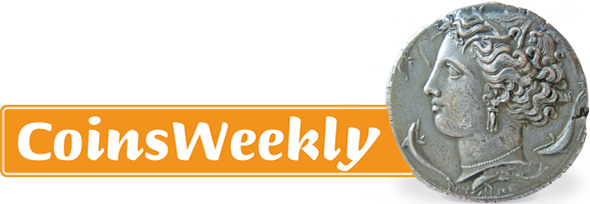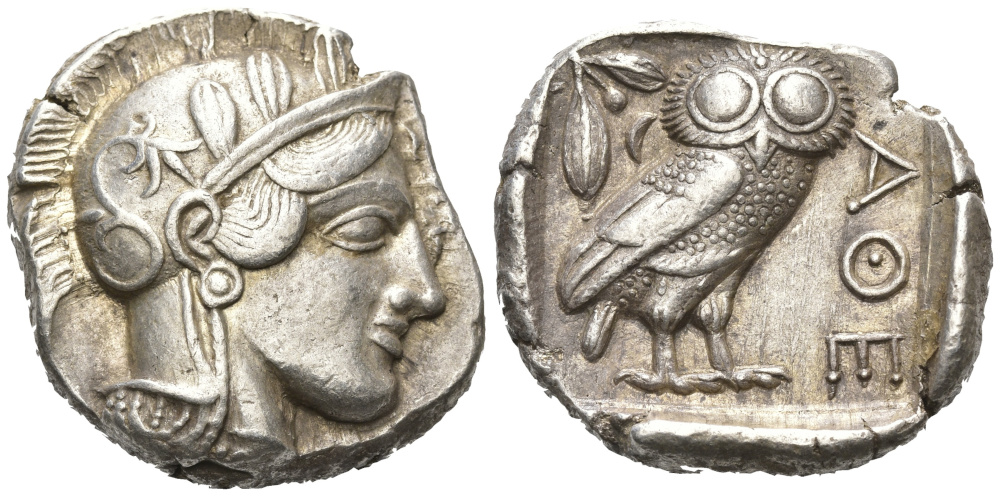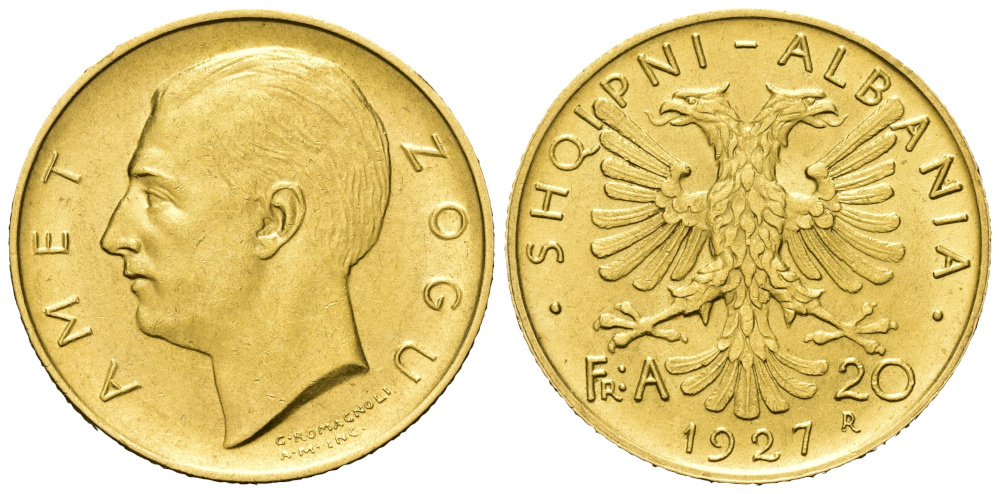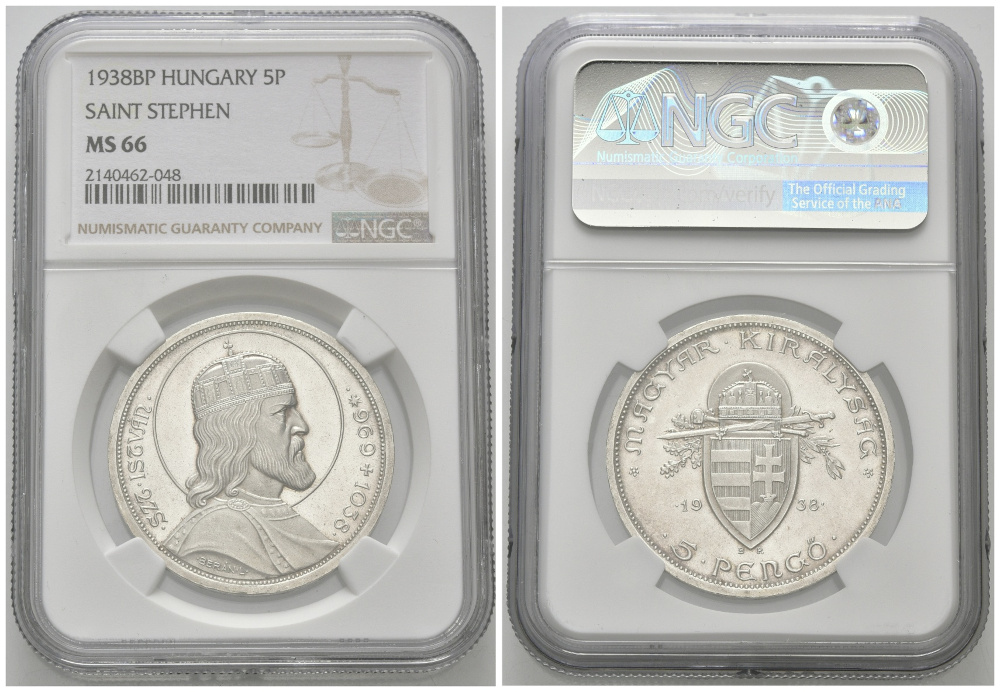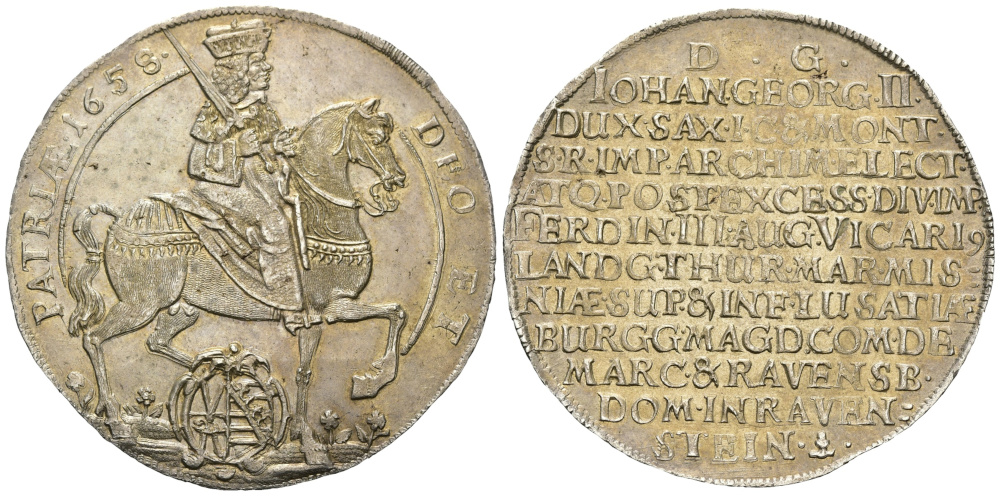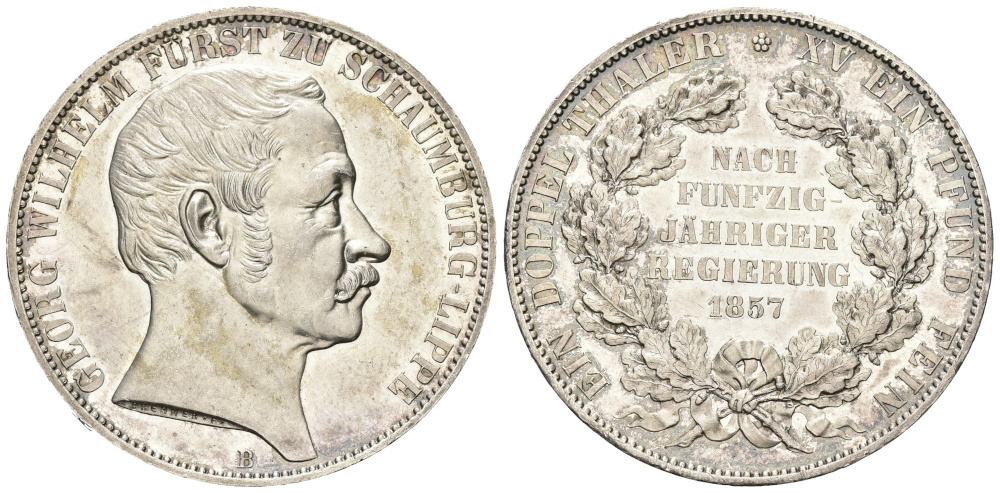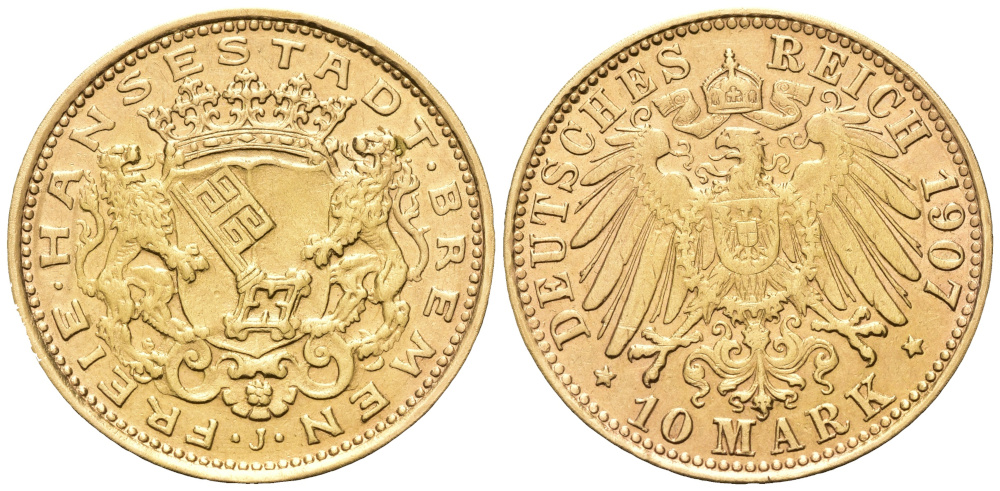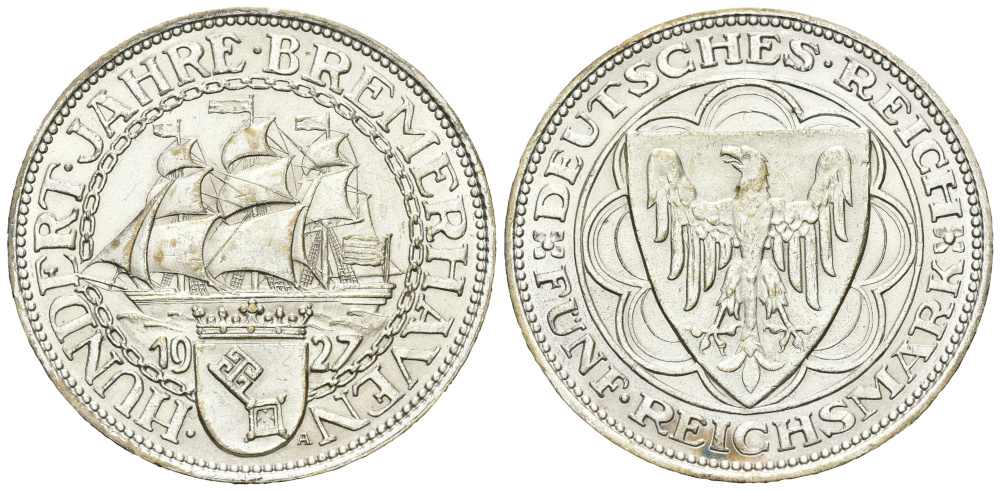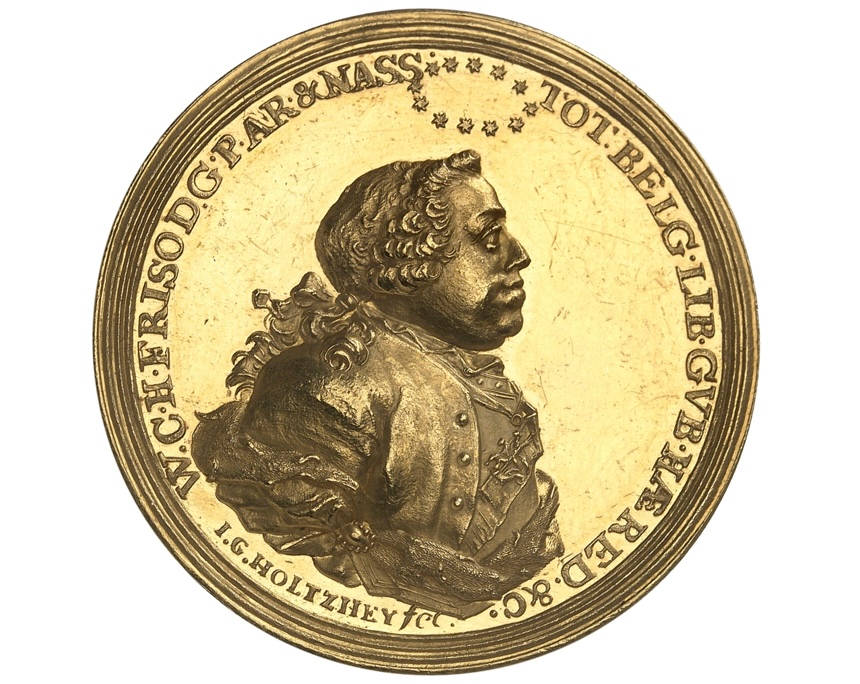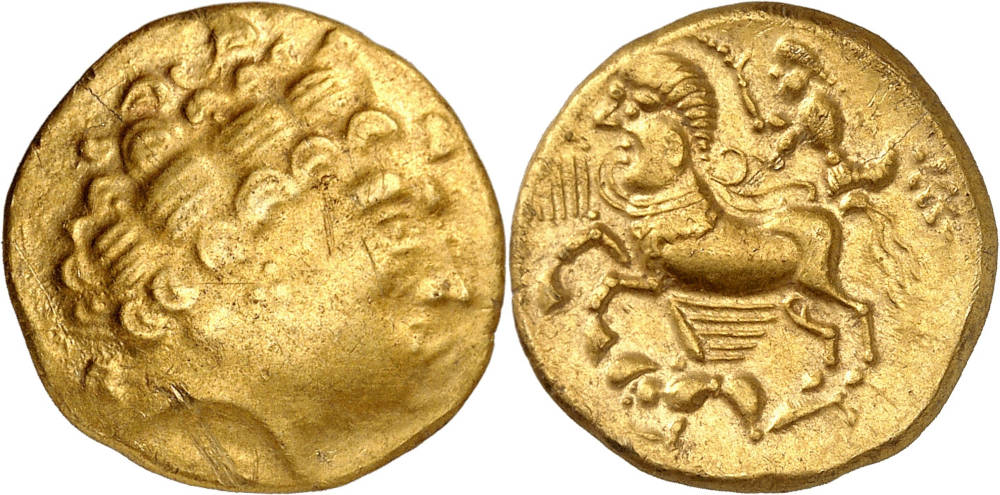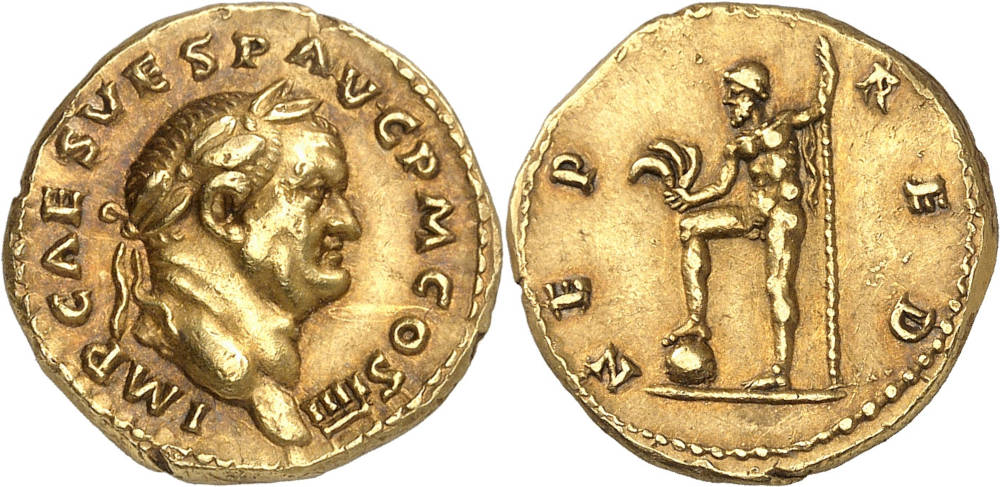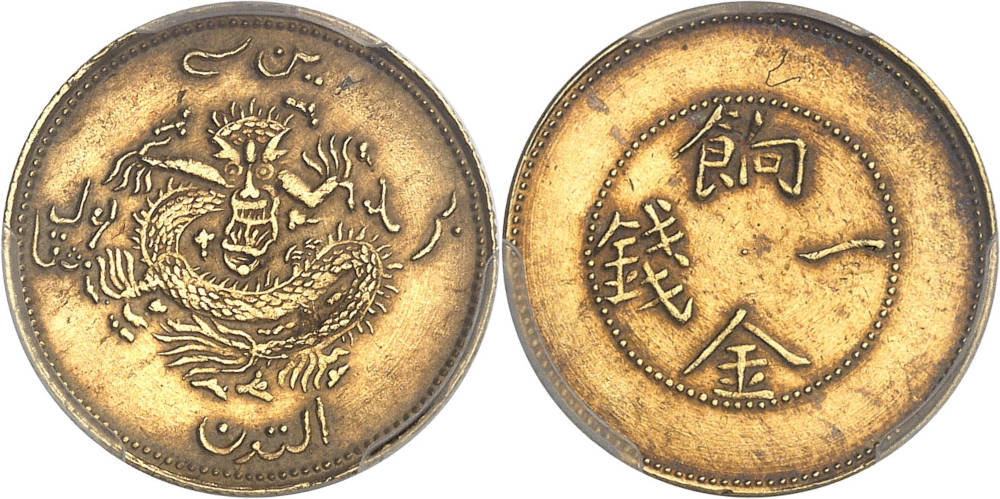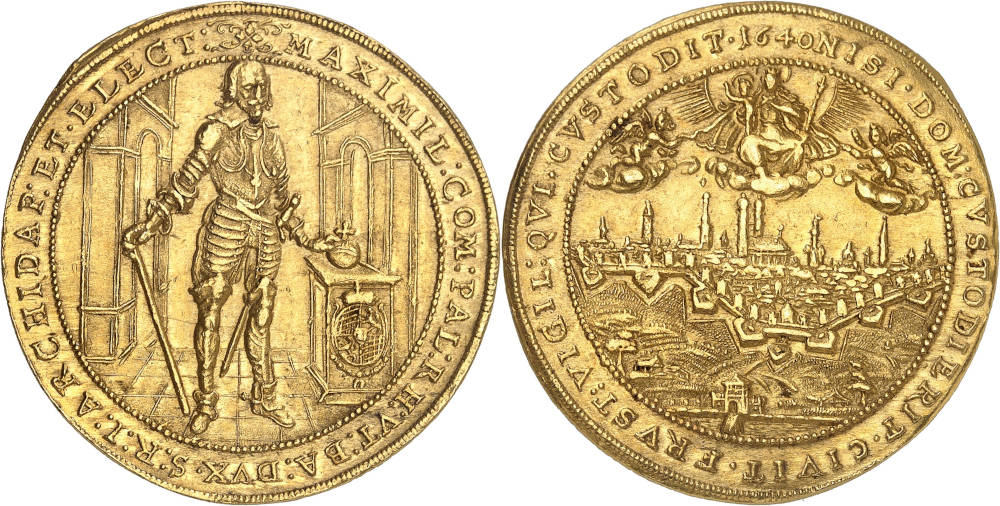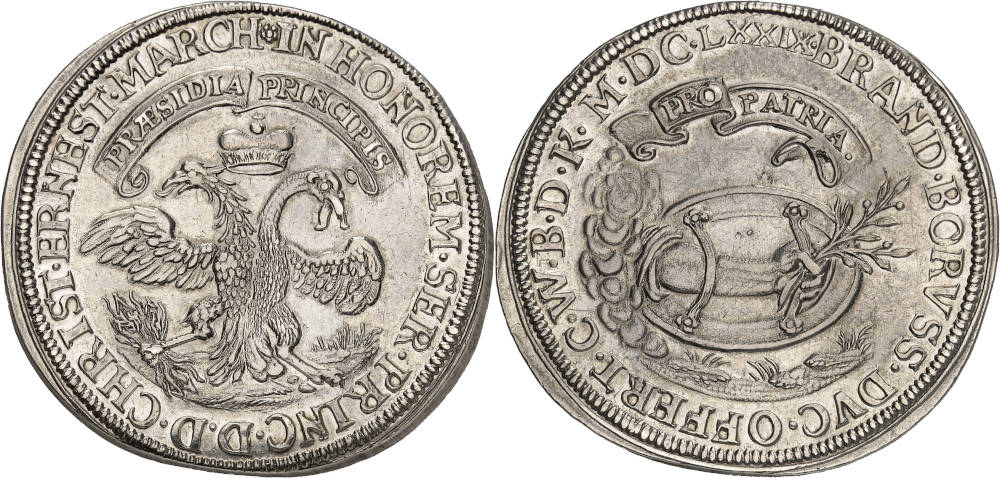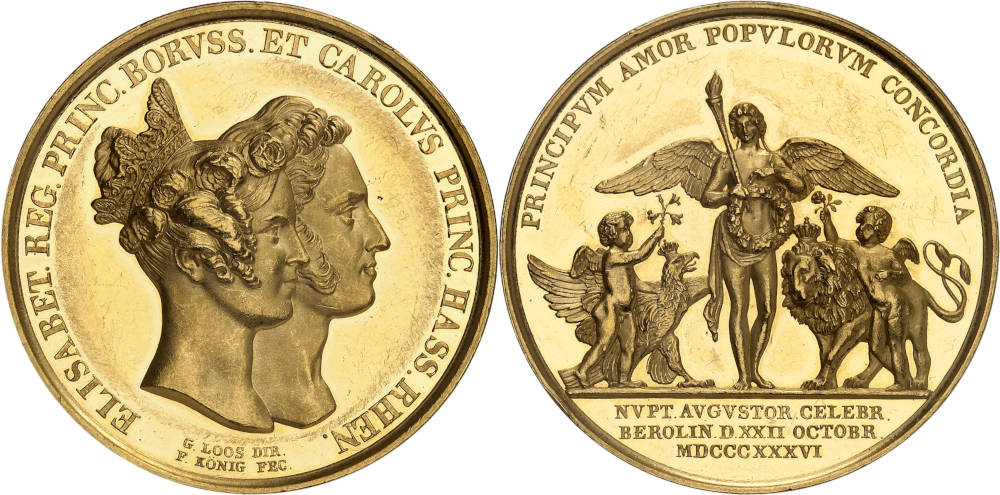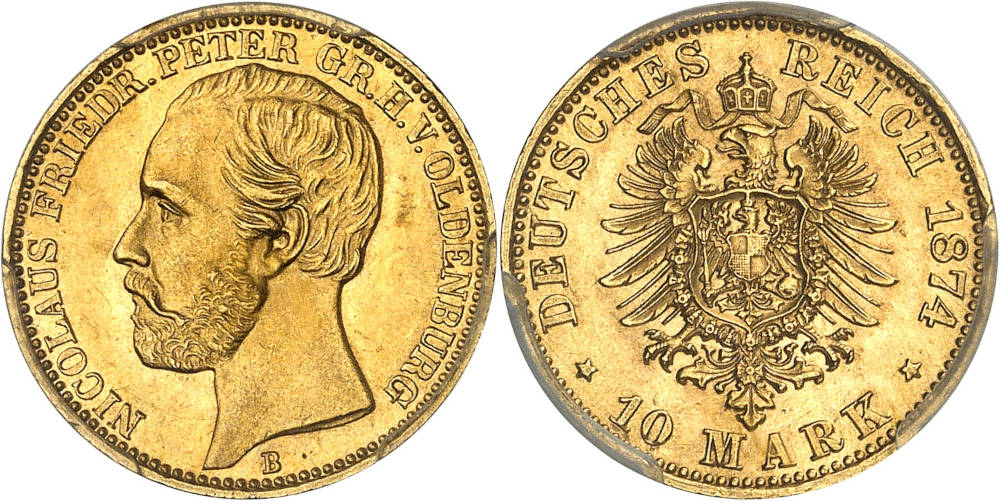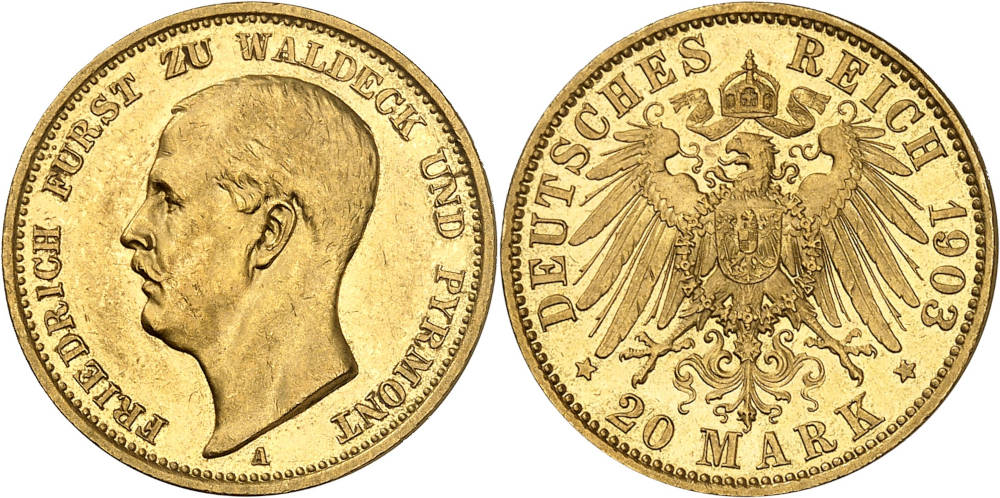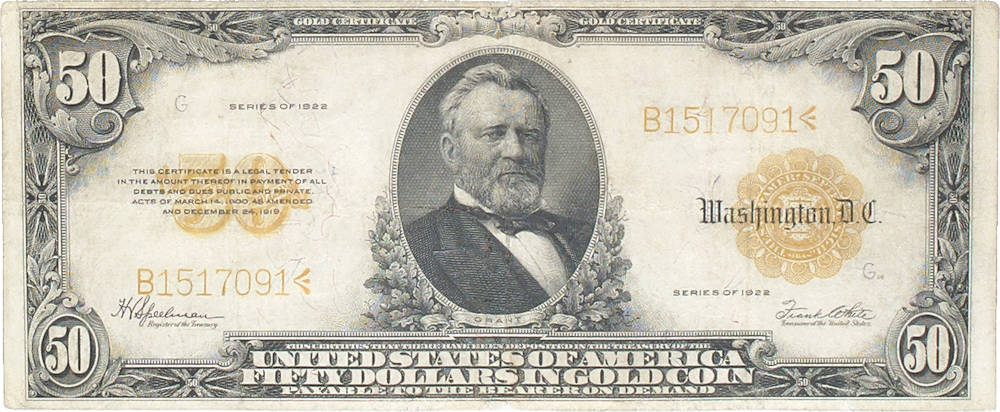Aurei, Chinese Rarities and Paper Money at Heidelberger Münzhandlung
Heidelberger Münzhandlung
Auction 90
Coins
13-14 May 2025
D-Heidelberg
On 13 May 2025, it is time for Heidelberger Münzhandlung’s biannual auction sale. Once again, Herbert Grün has succeeded in putting together a fascinating mix of interesting coins and medals from various fields and, most importantly, from various price segments. Collectors with a small budget will find their dream coins here, as will investors looking to spend tens of thousands of euros on numismatic items.
Special highlights of the sale include an extensive collection of ancient gold with many aurei, a large run of French pieces, including peripheral areas such as Luxembourg and Monaco, Chinese rarities as well as magnificent gold medals, especially from the House of Nassau. As always, the section with German coins is the richest and most comprehensive chapter of this auction sale. Collectors will find some great rarities in gold and silver, as well as an extensive collection with pieces from the Palatinate. Of course, the German Empire and the Weimar Republic are also well represented. After all, Heidelberger Münzhandlung specialises in this area. The paper money section has become increasingly important in recent years. This time, it presents, among other things, a small series of US banknotes, including rare specimens.
Ancient Gold Coins
As always, the auction begins with ancient coins. Some 350 lots are on offer, including many multiple lots. They present exactly what true collectors love: gold, silver and bronze coins with reasonable estimates in conditions ranging from very fine to extremely fine + from the Celtic, Greek, Roman and Byzantine periods.
Particularly noteworthy is the collection of gold coins, items of which can be found across the entire chapter presenting ancient specimens. Here you can see a gold stater of the Treveri modelled on Philippian staters. The reverse, in particular, shows how creatively Celtic artists re-interpreted the Greek model. An octodrachm of Ptolemy IV serves as an example from the Greek section.
Aurei are the crown jewels of Roman coinage. A great deal of effort and skill went into their creation, which is why imperial portraits on aurei are often of exquisite quality. Those who appreciate this artistry can choose between many different pieces featured in Auction 90. Their quality ranges from very fine to extremely fine. Estimates start at 1,000 euros. Some pieces have excellent provenances, coming from holdings of Münzen & Medaillen AG in Basel or from Auctiones auctions managed by MMAG.

No. 208 – Antoninus Pius, 138-161. Aureus. From Münzen und Medaillen AG. About mint state. Estimate: 5,000 euros.
Extensive Series with Coins of Antoninus Pius, Emperor of Peace
For those who can only dream of purchasing Roman gold coins, Auction 90 also offers a rich selection of exquisitely preserved Roman denarii, some of whose portraits are just as excellent as those of the aurei. The era of the adoptive emperors is particularly well represented. There are 43 lots from Peace Emperor Antoninus Pius, including coins for him, his wife and Caesar Marcus Aurelius.
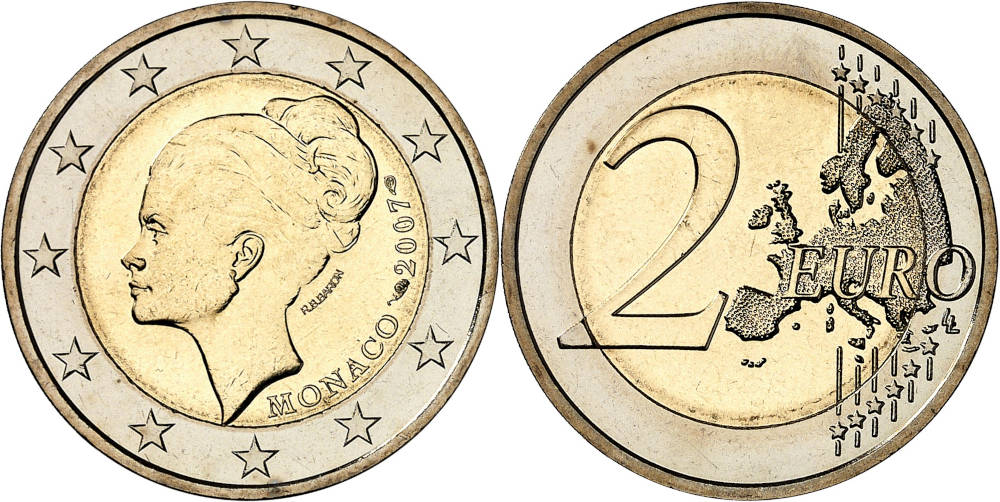
No. 568 – Monaco. 2 euros 2007. 25th anniversary of the death of Grace Kelly. Extremely fine to FDC. Estimate: 1,500 euros.
Large Section with Pieces from France, Luxembourg, Monaco
Let us move on to the next chapter. Among the 500 lots with world coins, there are many fascinating pieces from all over the globe. France and the neighbouring countries of Monaco and Luxembourg are particularly well represented with 150 lots.
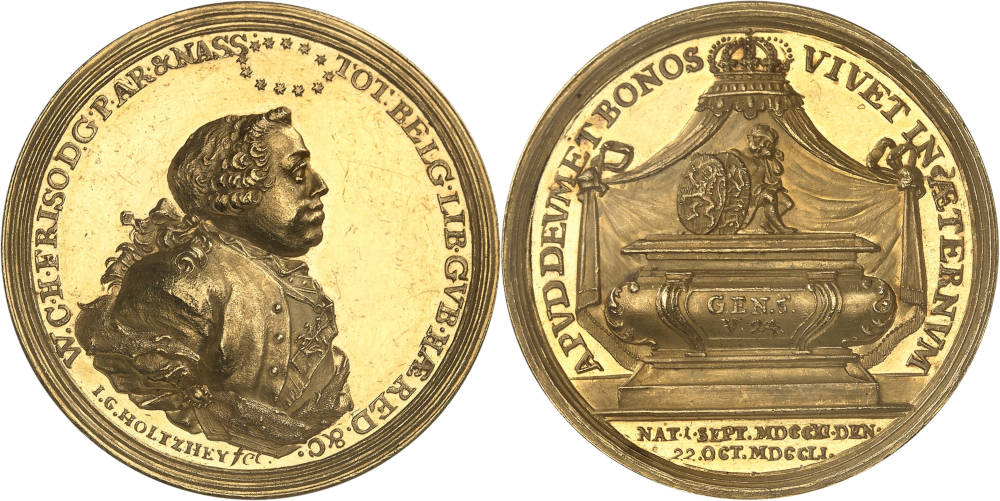
No. 577 – Netherlands. William IV Friso, 1711-1751. Gold medal of 11 ducats, 1751, by J. G. Holtzhey. Commemorating his death. Extremely rare. Extremely fine. Estimate: 10,000 euros.
Gold Medals from the House of Nassau
The House of Nassau, whose origins can be tracked back to the 11th century, still rules Luxembourg today. This is just the last remnant of the many territories that were once under the control of a member of the House of Nassau. This time-honoured dynasty is represented in Auction 90 of Heidelberger Münzhandlung with some spectacular gold medals, which can be found in several sections: the Netherlands and Nassau-Weilburg, i.e., the house that took over the rule of Luxembourg after the extinction of the House of Orange-Nassau.
Heidelberger Münzhandlung offers two medals of William IV Friso, the first hereditary governor of the United Provinces of the Netherlands. He held this high office from 1747 until 1751. His two excellent medals are impressive – they have a weight of seven and eleven ducats respectively.
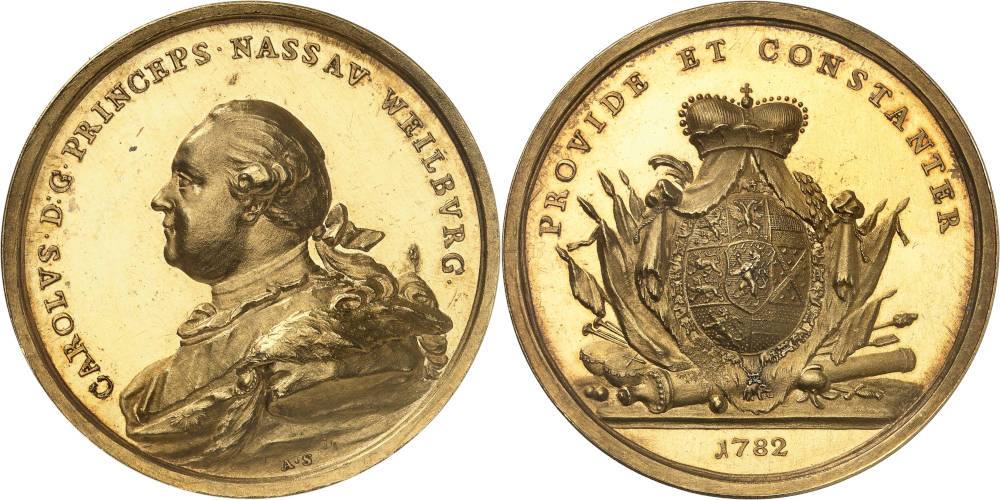
No. 1151 – Nassau-Weilburg. Charles Christian, 1753-1788. Gold medal of 25 ducats, 1782, by A. Schäffer. Extremely rare. Extremely fine. Estimate: 25,000 euros.
Another even rarer and heavier medal was created under Charles Christian of Nassau-Weilburg, who married the daughter of the aforementioned William IV of Orange-Nassau in 1760. The extremely rare piece has a weight of 25 ducats, an impressive 87 g.
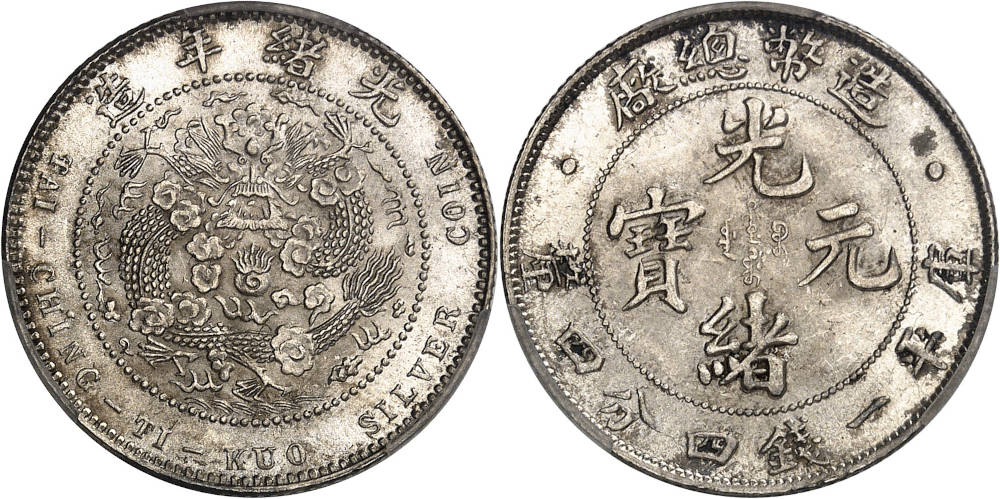
No. 690 – China. Hsuan Tung, 1908-1911. 20 cents n.d. (1908). PCGS MS64. FDC. Estimate: 10,000 euros.
Chinese Rarities
Two coins of great rarity commemorate the last years of the Chinese Empire. They were struck at a time when the central government was attempting to introduce a single currency throughout the Empire. The bear the inscription Hsuan Tung, which roughly translates as “tradition obliges”. This was the government motto of the child emperor known as Puyi, who ascended the throne in 1908 at the age of two. A 20-cent piece dates from the first year of his reign, a 10-cent piece from the last. The reign of 6-year-old Puyi came to an end when the Wuchang Uprising broke out on 10 October 1911 and escalated into a revolution.
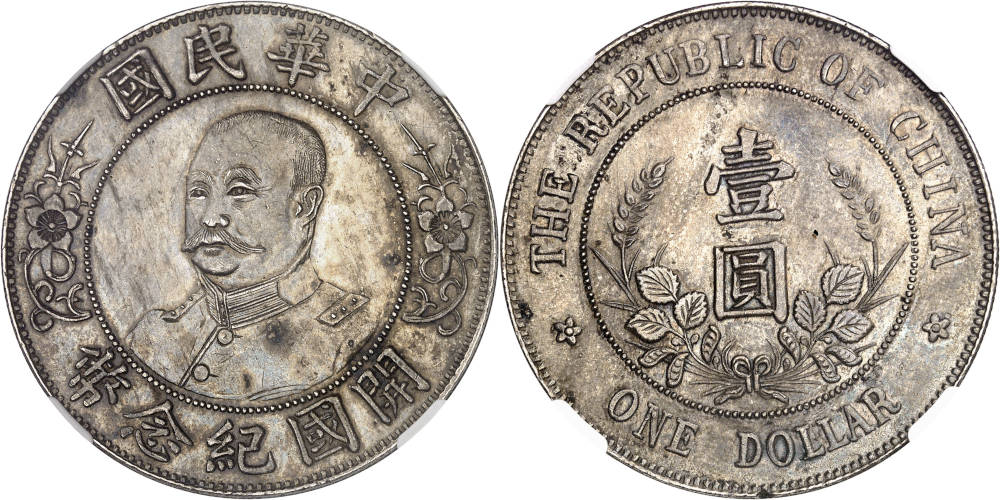
No. 693 – China. People’s Republic. Dollar n.d. (1912). NGC MS61. Extremely fine to FDC. Estimate: 6,000 euros.
Heidelberger Münzhandlung can also offer some very rare silver dollars from the early years of the People’s Republic. The first coin shown here commemorates the rise to power of Sun Yat-sen, a second commemorates the second man in the state, Vice-President Li Yuanhong, who later became President of China himself.
Even rarer is this 1907 Xinjiang gold coin, produced at the Shuimogou arms factory. It was minted with the machines that were available there. But due to the inappropriate equipment, the coin were usually of poor quality. People in China joked that the relief was so faint, it could almost be rubbed off by hand. This is not true, of course. But there was another problem with the coins. They were supposed to be worth three taels of silver. But since the silver price was tumbling on the international market, local businessmen took advantage of this to buy gold coins with cheap silver. They would then go on to melt down the gold coins and sell the metal abroad at a much higher price. As a result, these gold coins are extremely rare today.
They were created under Puyi’s predecessor, Guangxu. He was only a de jure ruler at this point; in reality, Empress Dowager Cixi controlled the empire. She forced Guangxu to adopt the 2-year-old Puyi and is said to have ordered progressive Guangxu to be poisoned the day before she died. In fact, when his body was examined in 2008, it was found to contain an excessive amount of arsenic, more than 2,000 times the expected level. Scientists believe that he was given this dose at once, supporting the poison theory.
German States: A Speciality of Heidelberger Münzhandlung
It goes without saying that German coins are the speciality of Heidelberger Münzhandlung. They make up the largest part of the auction and represent the entire spectrum from A for Anhalt to W for Würzburg. Particularly noteworthy are the many well-assembled multiple lots at reasonable prices.
We have put together a selection of special pieces that are characterised by their excellent condition and great rarity.
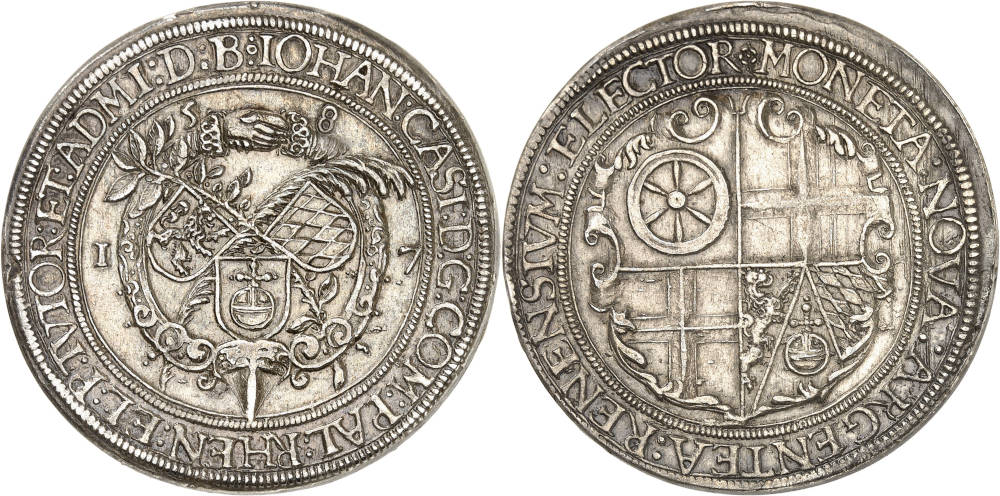
No. 1242 – Palatinate-Simmern. Johann Kasimir von Lautern, 1576-1592. Rheinischer Münzvereinstaler, 1587, Heidelberg. Extremely fine. Estimate: 3,000 euros.
Special Collection Palatinate
Collectors of pieces from the Palatinate and all the branches of this house will be spoilt for choice at Auction 90 of Heidelberger Münzhandlung. It contains a rich selection of Palatinate coins and medals from the High Middle Ages to the end of the 18th century. It is a real collection, put together with great passion. As a result, there are many great rarities among the 240 or so lots.
The German Empire: Another Speciality of Heidelberger Münzhandlung
Anyone familiar with Heidelberger Münzhandlung will have been waiting for this: Auction 90 will also feature an extensive selection of coins from the German Empire, the Weimar Republic, the FRG and the GDR, as well as colonies and other territories.
Paper Money
Do you collect paper money? Then you should definitely take a look at the about 300 lots with paper money on offer at Heidelberger Münzhandlung. There are plenty of rarities to discover!
Let us begin with US issues. There is an extensive series of US banknotes, starting in 1886 and going up to the 1930s. There are dollar notes from the Fed as well as issues from various banks in Indiana, New York, Pennsylvania and Tennessee. In addition, there are military payment certificates and gold certificates.
But there are also other world rarities in the catalogue, such as a very rare and extremely fine 2-karbovanet note from Ukraine, issued under German occupation in 1942.
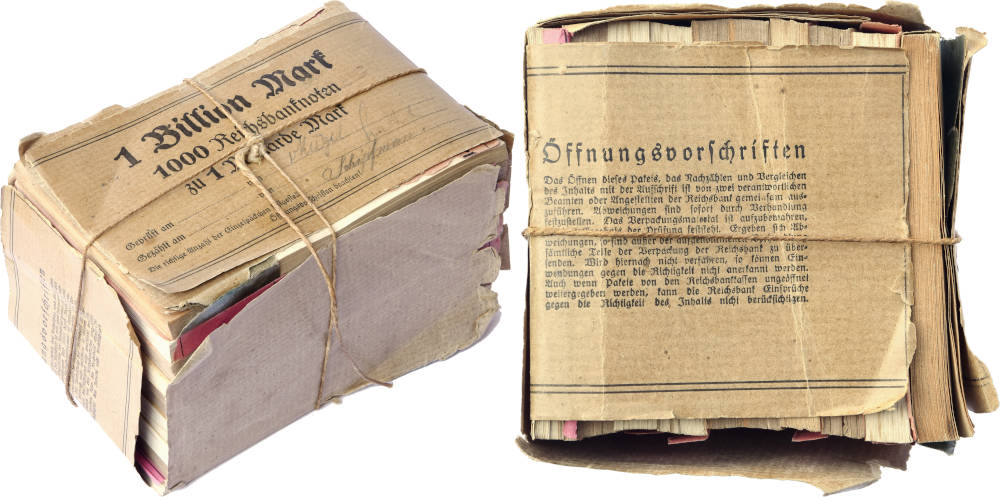
No. 2385 – German Empire. Multiple lot with 1,000 banknotes: unopened pack of the Reichsbankkasse with 10 bundles of 100 notes each of 1-billion marks overprinted on 1,000-mark notes from 15 December 1922. Extremely rare in this form! Ripped packaging. Most banknotes uncirculated. Estimate: 1,500 euros.
Always wanted to be a trillionaire? You can make this dream come true with lot No. 2385 of Auction 90. It is an unopened pack of the Reichsbankkasse with 10 bundles of 100 notes each, with the 1,000-mark banknotes of 15 December 1922 overprinted with 1 billion marks. The pack is extremely rare in this unopened form and would look wonderful in a museum display case.
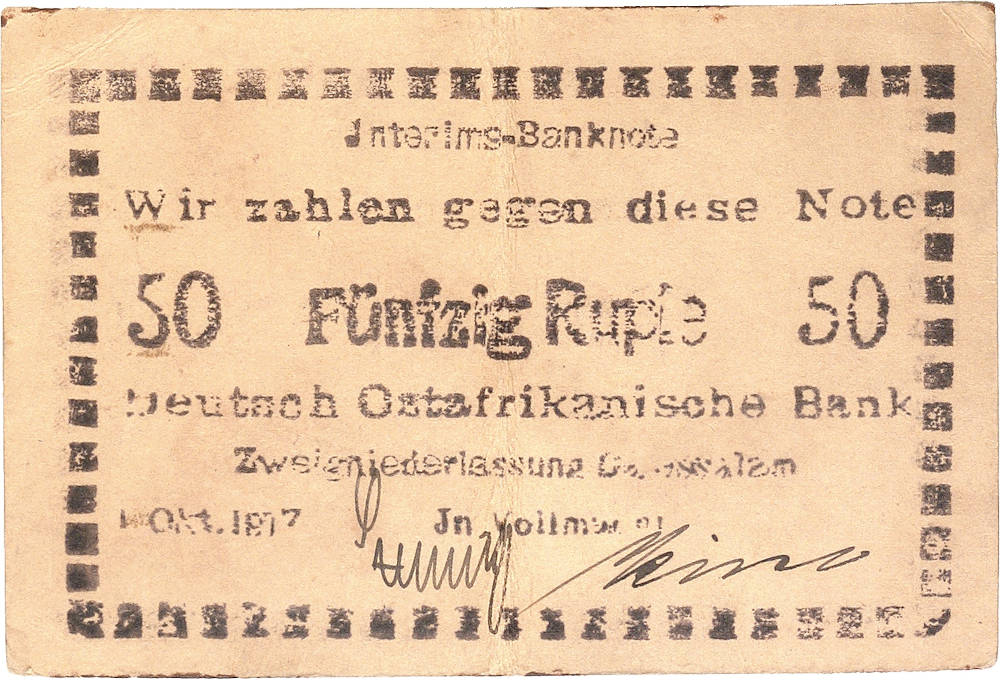
No. 2441 – German East Africa. 50 rupees, 1 October 1917 (“bush note”). Very rare. One fold, very fine. Estimate: 2,000 euros.
14 lots with banknotes from German East Africa are another exciting highlight of the paper money auction, including many rarities such as a 200-rupee banknote from Tabora dated 15 June 1915. Even rarer is the so-called bush note (“Buschnote”). This is the extremely rare 50-rupee note – the highest face value of the series – dated 1 October 1917. If you are puzzled by the strange printing, you should know that the banknotes were produced during the First World War using the printing plates of a children’s printing press discovered on a farm. They were intended to compensate for a shortage of banknotes until real money could be imported from Germany again.
The auction catalogue can be purchased for the nominal fee of 12.50 euros at Heidelberger Münzhandlung Herbert Grün, Gaisbergstr. 40, 69115 Heidelberg, Germany; phone: +49 / 6221 / 65 2970; fax: +49 / 6221 / 65 297-29; email.



